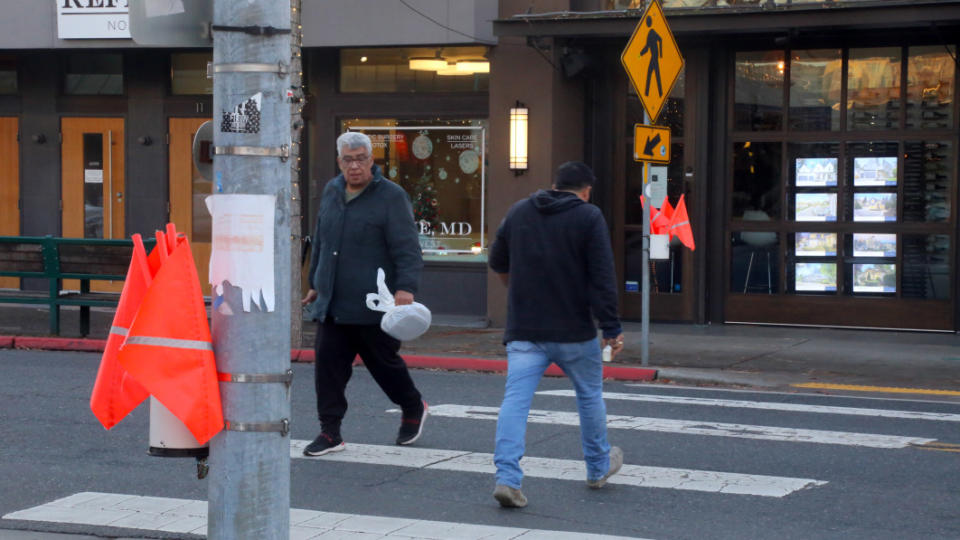Thousands of pedestrians die each year. It doesn't have to be that way

Remember when you were a kid and were taught how to safely cross a busy street? A lot of adults seem to have forgotten.
We talk a lot about driver behavior around here. Earlier this month, an AAA survey of drivers confirmed what we could’ve assumed: Virtually everyone knows that activities like driving aggressively or texting are dangerous, but many admit to doing these things anyway. We’re always looking for insights into why U.S. traffic fatalities have increased and are expected to get even worse.
But we don’t talk nearly as much about pedestrian behavior — and one in six of those traffic deaths is a pedestrian.
The behavior I've witnessed just in the past week:
I was leaving a parking lot at night, waiting to turn left onto a four-lane street. Just as a break in traffic opened up, a gray-haired woman in her 60s or 70s emerged from the darkness and inexplicably decided to run, literally run, in front of the car. She was wearing a black coat. At least she was fast: Two seconds slower and we'd both have had a bad evening.
There’s a young man who walks up and down the steep hill into my neighborhood at night. He's there often, so I’m on the lookout for him. The road is narrow, has switchbacks and guardrails, no streetlights, and a ditch but no shoulder. He wears dark clothes, always with a hood pulled over his head. As cars approach, he steps up the muddy embankment to avoid them.
On literally the bright side, a family in the neighborhood takes regular nighttime strolls. Four of them, all in reflective vests. Their togetherness is cute, and they give off an impressive glow.
Pedestrian fatalities have been trending upward a long time — since 2009. Pedestrian fatalities in 2021 were up 13% over the year before, outpacing the 10.5% overall increase in traffic fatalities. Pedestrian deaths last year (7,432 souls) surpassed motorcyclist deaths (6,101), and to a surprising degree, bicyclist deaths (985).
Three-quarters of pedestrian deaths occur in a location other than an intersection – where a driver is at higher speeds and would least expect to encounter someone walking. Similarly, three-quarters of fatal accidents occur at night. In 32% of fatal crashes, the pedestrian had a blood-alcohol level exceeding 0.08% — too impaired to drive, or to make coherent decisions on foot, evidently. In 10% of pedestrian fatalities, the driver was drunk.
People cross streets while staring at phones, or wearing earbuds, or otherwise distracted. You may have seen our post a couple of months back showing this scary near-miss in a California crosswalk. The driver in the video is likely to blame in the eyes of the law for blowing through the intersection – but that’s not to say the distracted father herding the kids is blameless.
It may be a cultural thing here in the Pacific Northwest where people are indirect in their dealings with each other, but pedestrians entering a crosswalk here often don’t make eye contact with drivers. (How are pedestrians where you live? Let us know in the comments.) It’s as if they themselves have never driven a car. They’ll just step on out, expecting cars will stop.
Sure, a pedestrian has right-of-way. But if you’re a pedestrian who’s dead, it’s a pyrrhic victory.
Flag on the play
Downtown Kirkland, Wash., is lined with shops and restaurants where two arterials intersect. It’s filled with crosswalks along the lakeshore and, particularly in summer, foot traffic. After a couple of fatalities in the early 1990s, the city set up a simple system — dispensers containing brightly colored flags pedestrians can carry in a crosswalk to increase visibility. You may have seen these in other towns. They’re now installed at 90 crosswalks throughout Kirkland.

 Yahoo Autos
Yahoo Autos 
